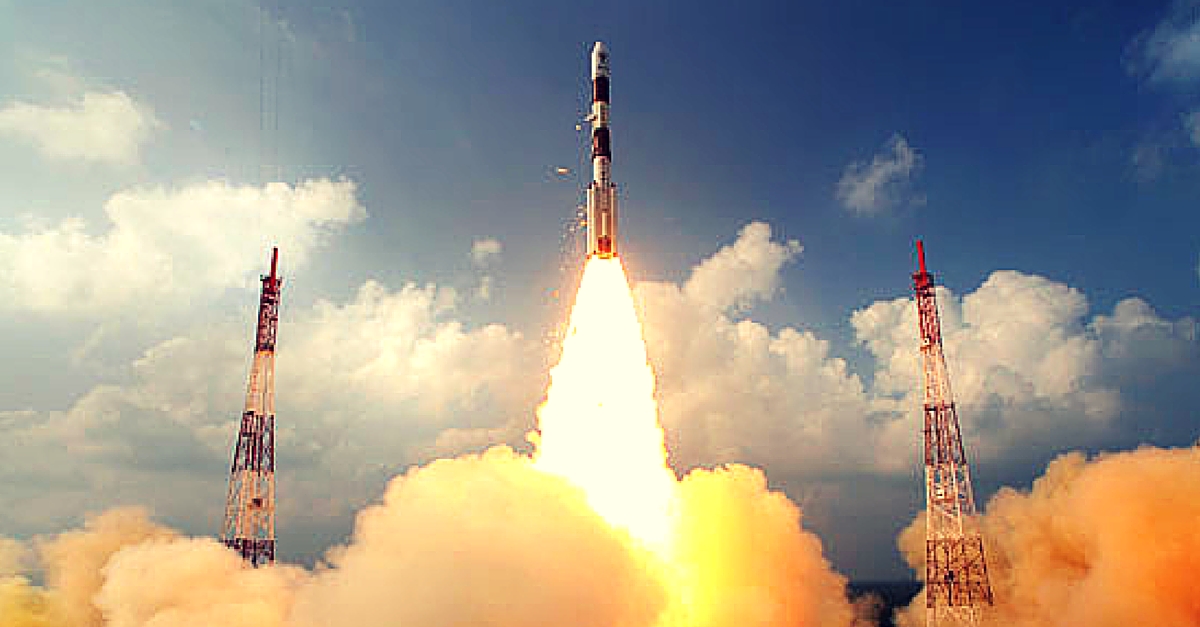New ISRO Satellite to Predict Cyclones Being Built at 60% the Actual Cost, in One Third of the Time
The Indian Space Research Organization (ISRO) is developing a new weather-forecasting satellite to predict the beginning of cyclones in oceans. This is what’s unique about it.

The Indian Space Research Organization (ISRO) is developing a new weather-forecasting satellite to predict the beginning of cyclones in oceans. About 300 scientists are working on the satellite named ScatSat-1, at the Space Applications Centre (SAC) in Ahmedabad.
The best thing about this 301 kg satellite is that it is being built at 60% of the actual cost, and in one-third of the estimated time.
About 40% of satellite is made by recycling the leftover equipment from previous satellite missions. It will be launched in July 2016 and has a mission life of five years.

Picture for representation only. Source: ISRO
ScatSat-1 will replace OceanSat-2, which was launched in 2009 and was known for its accurate predictions of cyclones like Hudhud and Phailin. OceanSat-2 stopped functioning in Feb 2014. Currently, ISRO is getting most of the weather information from INSAT-3D satellite.
“Normally, it takes about three years to build a satellite of this class from scratch. However, as we have sourced 40% of the parts used in ScatSat-1 from spares of previous missions, we will complete it in a year’s time,” Tapan Misra, director of the SAC, told The Indian Express.
He added that at the time of launch, ScatSat-1 will be a piggy ride with another satellite, and this will help save costs even further.
A scatterometer in the satellite will help predict formation of cyclones in the seas. Such predictions help in timely evacuation and minimise human casualties. A scatterometer is a microwave radar sensor. It measures the scattering effect produced while scanning the surface of the Earth from an aircraft or a satellite. It will measure the direction and speed of winds over the seas and oceans. The satellite has been designed to withstand multiple system failures, unlike the last one.
It is a polar orbiting satellite that will take two days to cover the globe. The data will be used by NASA, European Organisation for the Exploitation of Meteorological Satellites, and National Oceanic and Atmospheric Administration as well.
SAC is one of the major centres of ISRO and it deals with disciplines like design and development of payloads, societal applications, capacity building and space sciences, etc.
Like this story? Or have something to share? Write to us: [email protected], or connect with us on Facebook and Twitter (@thebetterindia).
If you found our stories insightful, informative, or even just enjoyable, we invite you to consider making a voluntary payment to support the work we do at The Better India. Your contribution helps us continue producing quality content that educates, inspires, and drives positive change.
Choose one of the payment options below for your contribution-
By paying for the stories you value, you directly contribute to sustaining our efforts focused on making a difference in the world. Together, let’s ensure that impactful stories continue to be told and shared, enriching lives and communities alike.
Thank you for your support. Here are some frequently asked questions you might find helpful to know why you are contributing?


This story made me
-
97
-
121
-
89
-
167











